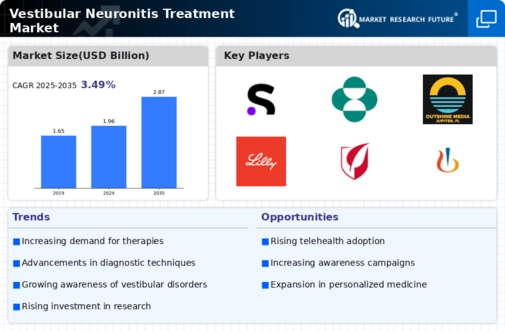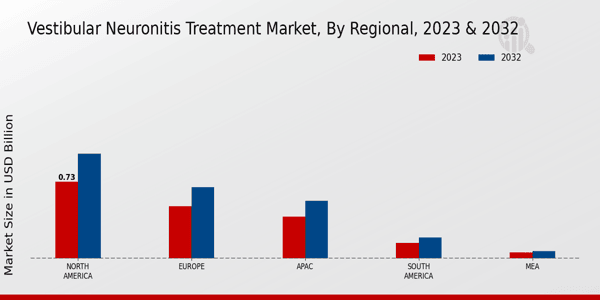Market Growth Projections
Rising Healthcare Expenditure
The Global Vestibular Neuronitis Treatment Market Industry is benefiting from rising healthcare expenditure across various regions. Increased investment in healthcare infrastructure and services is facilitating better access to treatment options for vestibular disorders. Governments and private sectors are allocating more resources to enhance healthcare delivery, which is essential for managing conditions like vestibular neuronitis. This trend is expected to support market growth, as higher spending correlates with improved patient outcomes and the availability of advanced treatment modalities.
Growing Awareness and Diagnosis
There is a notable increase in awareness and diagnosis of vestibular disorders, which is positively impacting the Global Vestibular Neuronitis Treatment Market Industry. Enhanced education among healthcare professionals and the public is leading to earlier detection and treatment of vestibular neuronitis. This trend is crucial, as timely intervention can significantly improve patient quality of life. As awareness continues to grow, the market is expected to expand, with a projected CAGR of 3.52% from 2025 to 2035, indicating a sustained focus on improving diagnostic capabilities and treatment access.
Advancements in Treatment Modalities
Innovations in treatment modalities are driving the Global Vestibular Neuronitis Treatment Market Industry. Recent advancements in pharmacological therapies, including the development of vestibular suppressants and corticosteroids, have enhanced treatment efficacy. Additionally, physical therapy techniques, such as vestibular rehabilitation, are gaining traction as effective management strategies. These advancements not only improve patient outcomes but also contribute to market growth. The anticipated increase in market value to 2.87 USD Billion by 2035 underscores the importance of ongoing research and development in this field.
Integration of Telemedicine in Treatment
The integration of telemedicine into healthcare is transforming the Global Vestibular Neuronitis Treatment Market Industry. Telehealth services are providing patients with greater access to specialists and treatment options, particularly in remote areas. This shift is particularly beneficial for individuals with vestibular disorders who may face mobility challenges. The convenience and efficiency of telemedicine are likely to enhance patient engagement and adherence to treatment plans. As telehealth continues to evolve, it is expected to play a crucial role in shaping the future landscape of vestibular neuronitis treatment.
Increasing Incidence of Vestibular Disorders
The Global Vestibular Neuronitis Treatment Market Industry is experiencing growth due to the rising incidence of vestibular disorders. Conditions such as vestibular neuronitis are becoming more prevalent, particularly among older adults. This demographic shift is significant, as the aging population is more susceptible to balance disorders. As a result, healthcare systems are increasingly focusing on effective treatment options. The market is projected to reach 1.96 USD Billion in 2024, reflecting the urgent need for innovative therapies and management strategies to address these conditions.















